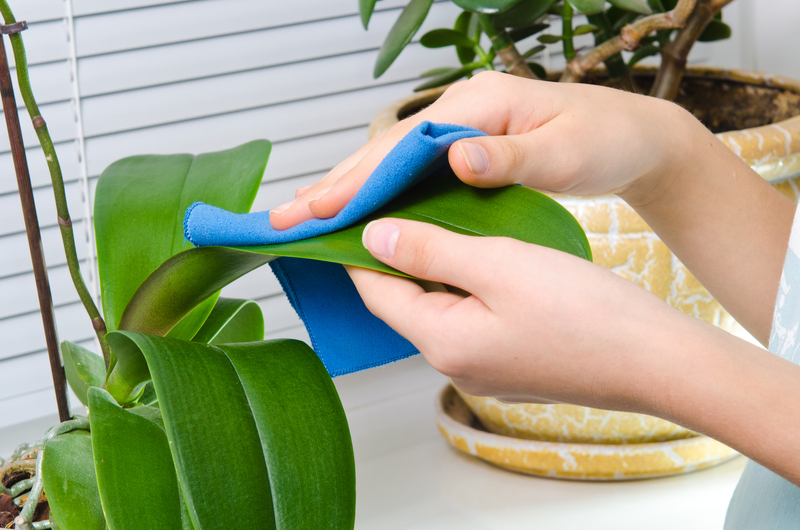Master the Art of Car Cleaning with These Expert Tips
Posted on 24/06/2025
Unlock the secrets to a spotless, shiny car with this all-inclusive guide to expert-level car cleaning. Whether you're an auto enthusiast or simply want your vehicle to look its best, mastering car cleaning gives you pride, enjoyment, and preserves your car's value. In this detailed resource, discover the best car cleaning techniques, clever hacks, and pro tips from detailing experts that will leave your car gleaming inside and out!
Why Proper Car Cleaning Matters
Many car owners underestimate the impact a thorough cleaning routine can have. Proper vehicle cleaning not only enhances your car's appearance but also ensures:
- Longevity: Removing dirt, salt, and contaminants prevents rust and corrosion.
- Maintained Value: Regular cleaning preserves paintwork and interior, increasing resale value.
- Improved Safety: Clean windows and lights improve visibility and driving conditions.
Investing time in mastering car washing pays off in both dollars and drive quality.

Essential Supplies for Expert Car Cleaning
Before getting started, ensure you have the right tools. This doesn't mean you need to break the bank--you can achieve professional results with a few quality products. Here's what you'll need for best car cleaning practices:
- Two buckets: One for soapy water and one for rinsing.
- Grit guards: These keep dirt at the bottom of the bucket, preventing scratches.
- Microfiber towels: Gentle on paint and highly absorbent.
- Specialized automotive soaps: Never use dish soap--it removes wax and damages finishes.
- Soft-bristled brushes: For wheels, crevices, and trim.
- Quality wax or sealant: For lasting shine and protection after cleaning.
- Upholstery cleaner: For your vehicle's fabric or leather seats.
- Vacuum with attachments: For comprehensive interior detailing.
Step-by-Step Guide to Exterior Car Washing
1. Rinse to Remove Loose Dirt
Always start by thoroughly rinsing your vehicle with a hose or pressure washer. This helps loosen grit and prevents surface scratches during washing. Remember, using a high-pressure spray on windows and delicate trim can cause damage, so moderate the force as needed.
2. The Two-Bucket Method
The two-bucket wash technique is a favorite among professionals:
- Bucket 1: Filled with clean, soapy water for washing.
- Bucket 2: Filled with plain water for rinsing your wash mitt or sponge after every pass.
This strategy prevents transferring dirt back onto your paintwork--helping you master the art of car cleaning.
3. Use the Right Motions
Work your way from the roof down, as contaminants accumulate near the bumper and lower panels. Use gentle back-and-forth or circular motions with a microfiber mitt, rinsing frequently.
4. Wheel and Tire Cleaning
Wheels require special attention and often the toughest cleaning:
- Use a dedicated wheel cleaner and brush.
- Never use the same mitt for wheels and paintwork--brake dust and grit can scratch your car's finish.
- Rinse thoroughly before moving to tires for a deep clean.
Pro Tip: Clean wheels first if you're using strong chemicals, so residue is washed away while cleaning the body.
5. Drying Without Streaks
Avoid air-drying, which leaves water spots.
- Use a clean, plush microfiber drying towel.
- Pat and wipe gently, working from top to bottom.
- For added shine, try a drying aid spray--a professional trick for a streak-free finish.
Expert Interior Car Cleaning Techniques
1. Remove Debris and Vacuum
Start by clearing out trash, mats, and personal items. Use a vacuum with attachments for seats, carpets, and hard-to-reach crevices. Pay special attention to:
- Seat tracks and seams
- Under seats
- Dashboard vents
- Trunk area
2. Clean and Protect Surfaces
Wipe down hard surfaces (dashboard, doors, center console) with a damp microfiber and a gentle cleaner. For deep cleaning:
- Plastic and vinyl: Use an interior detailer with UV protection to prevent fading.
- Leather seats: Apply a dedicated leather cleaner and conditioner for suppleness and protection.
- Fabric upholstery: Use a foaming cleaner and soft brush, blotting stains gently.
3. Crack and Crevice Detailing
Use a soft-bristled brush or a cotton swab for button clusters, air vents, and seams where dust collects. For the most stubborn grime, a compact steam cleaner can be incredibly effective--just don't saturate electronics!
4. Streak-Free Glass Cleaning
Clean windows and mirrors inside and out:
- Use an ammonia-free auto glass cleaner.
- Buff with a clean, dry microfiber towel to prevent streaks and haze.
- Don't forget the rearview mirror and infotainment screen (use a dedicated screen cleaner for electronics).
5. Odor Removal
Combat lingering smells with charcoal air purifiers, baking soda on carpets, or dedicated auto odor eliminators. Keep your car's aroma fresh with periodic cleaning and ventilation.
Advanced Car Detailing Tips from the Pros
1. Clay Bar Treatment
For a truly glassy finish, use a clay bar after the initial wash. This removes bonded contaminants such as tar, sap, and overspray that regular washing misses:
- Spray a clay lubricant on a small panel.
- Gently glide the clay bar across the surface, folding it regularly to expose a clean side.
The result is silky-smooth paint, prepped perfectly for waxing or sealing.
2. Waxing and Paint Sealants
Protect your paint and amplify gloss by applying wax or a synthetic sealant every three to six months. Here's the expert workflow:
- Apply in the shade, using a foam applicator pad and thin layers.
- Let it haze, then buff off with a microfiber towel for brilliant shine.
- For extra protection, add a ceramic spray sealant after waxing.
3. Engine Bay Cleaning
A clean engine bay looks impressive and helps with maintenance. To do it safely:
- Cover electronics and air intakes with plastic or aluminum foil.
- Use a gentle degreaser and a brush on dirty surfaces.
- Rinse lightly and dry with compressed air or towels.
4. Handling Stubborn Stains
- Bird droppings, bugs, and tree sap: Remove promptly with a moist microfiber and a bug/tar remover.
- Salt stains on carpets: Mix white vinegar and water, blotting with a towel.
- Mold/mildew: Use enzyme cleaners and open windows to prevent reoccurrence.
Acting quickly is crucial--harsh stains can etch paint or weaken upholstery if ignored.
Seasonal Car Cleaning Strategies
Spring and Summer
- Pollen, insects, and tree sap accumulation requires more frequent washing.
- Park in the shade to minimize sun damage and water spotting.
- Protect with UV-guard interior sprays.
Fall and Winter
- Road salt and slush can accelerate undercarriage rust--clean wheels, fenders, and chassis more often.
- Apply a winter sealant to protect paint from harsh weather.
- Use rubber floor mats and vacuum moisture regularly to prevent mildew inside.
Eco-Friendly Car Cleaning Tips
- Use biodegradable soaps and waterless wash solutions to minimize runoff pollution.
- Wash your car on the grass or over gravel to filter contaminants before they reach storm drains.
- Opt for reusable microfiber towels and avoid single-use wipes.
- Dispose of chemicals safely according to local regulations.
The Ultimate Car Cleaning Schedule
Consistency is key to becoming a car cleaning master. Create a maintenance schedule based on your local climate and driving conditions. Here's a guideline:
- Weekly: Exterior rinse and interior vacuuming.
- Bi-weekly: Thorough wash and dash wipe-down.
- Monthly: Deep interior cleaning, wheel detailing, and glass polish.
- Quarterly: Wax/sealant application and in-depth inspection for stains and paint chips.
- Seasonally: Undercarriage cleaning, engine bay freshen-up, and weather-protecting treatments.
Common Car Cleaning Mistakes to Avoid
- Skipping the pre-rinse: This causes swirl marks and scratches.
- Using the wrong cleaning chemicals: Household products can damage car surfaces.
- Reusing dirty towels and mitts: This grinds dirt into paintwork.
- Cleaning in direct sunlight: Leads to streaks and spots.
- Neglecting hidden areas: Door jambs, under the hood, and trunk lips collect debris and can harbor rust.

Frequently Asked Car Cleaning Questions
How often should I clean my car?
For most drivers, a general wash every two weeks and a deep interior cleaning monthly is ideal. However, if you live near the coast, in areas with heavy pollution, or drive off-road, you may need to clean weekly.
Is it worth detailing my car myself?
Absolutely! With the right products and methods, DIY car detailing can yield stunning, professional results at a fraction of the cost. Plus, you'll develop a keen eye for your car's needs--making you an expert in your own right!
How can I make my car smell fresh for longer?
Beyond air fresheners, regular vacuuming, seat and carpet cleaning, and occasional use of odor eliminators or ozone treatments will keep your car interior smelling clean and inviting.
Final Thoughts: Achieve Showroom Shine with Expert Car Cleaning
Mastering the art of car cleaning is more than just a chore--it's a satisfying ritual that enhances your connection with your vehicle and protects your investment. By following these expert tips, using the right tools, and maintaining a regular routine, you'll enjoy a car that stays cleaner, drives better, and looks stunning year-round.
Ready to experience the gleam of a professionally detailed car every time you hit the road? Start your ultimate car cleaning journey today and discover just how rewarding it can be to transform your vehicle from dull to dazzling!
Don't forget to share your best car cleaning tips or photos of your sparkling ride in the comments below!



.png)